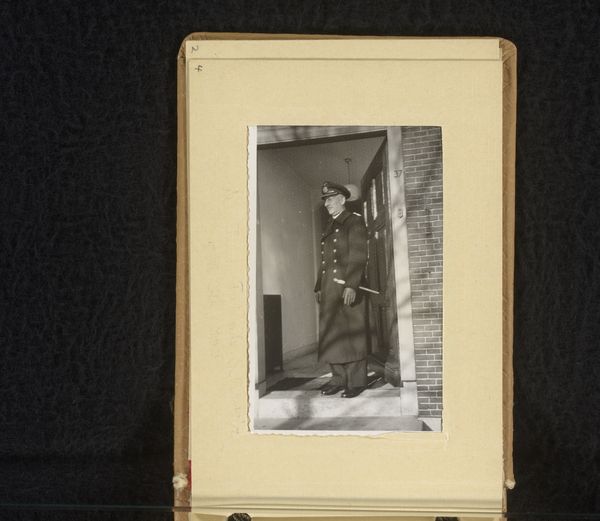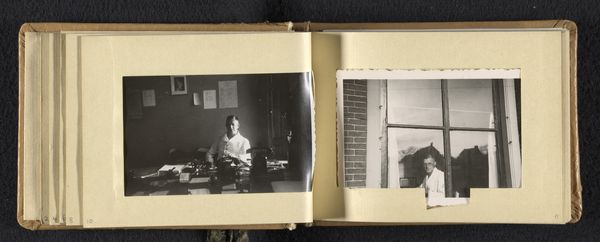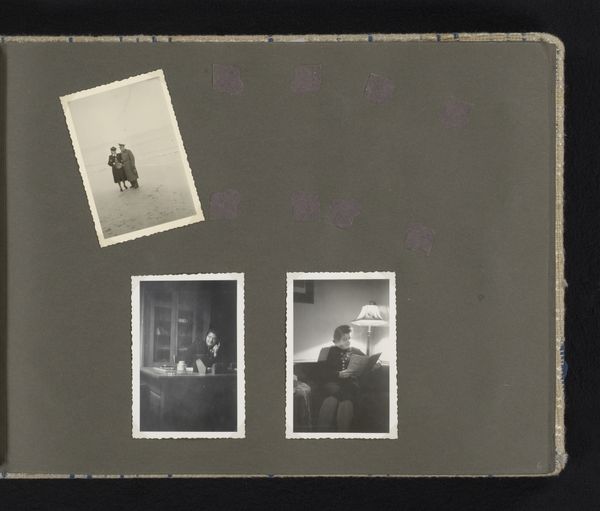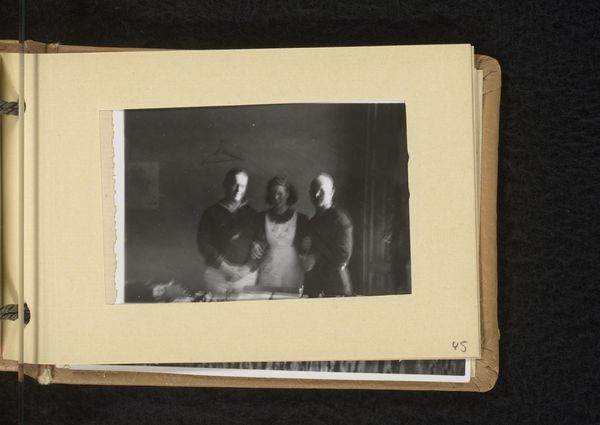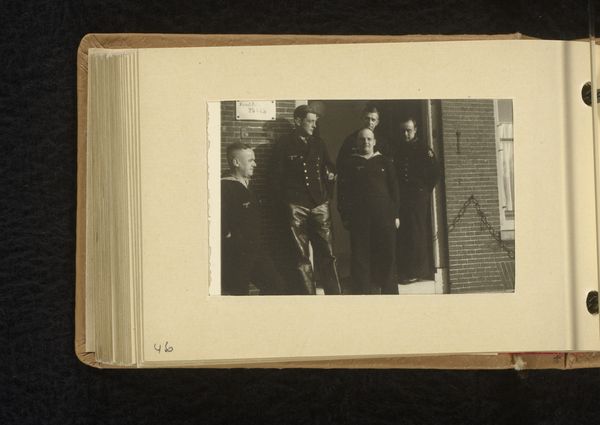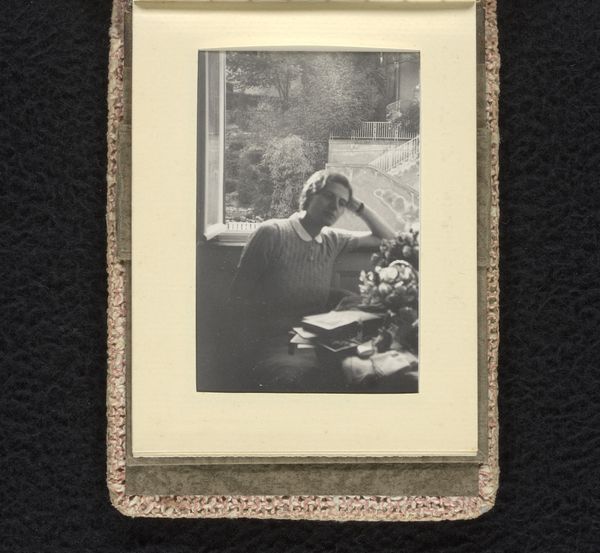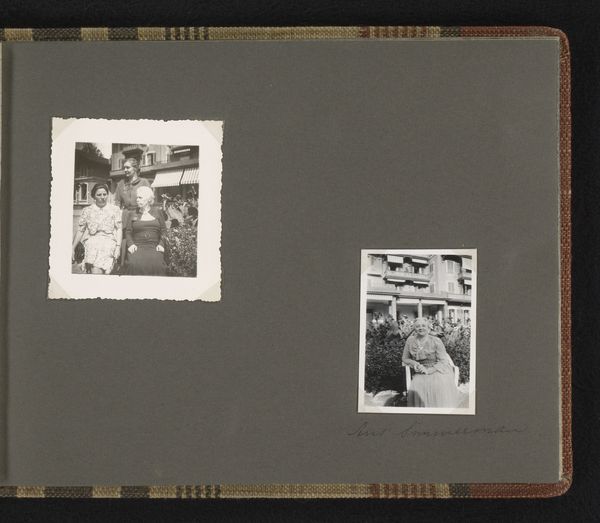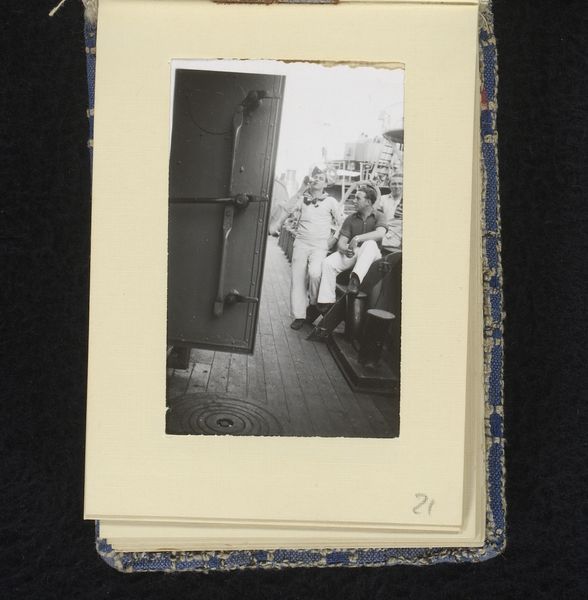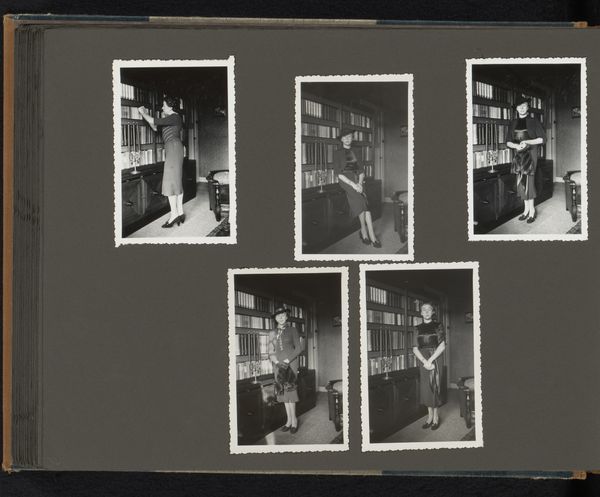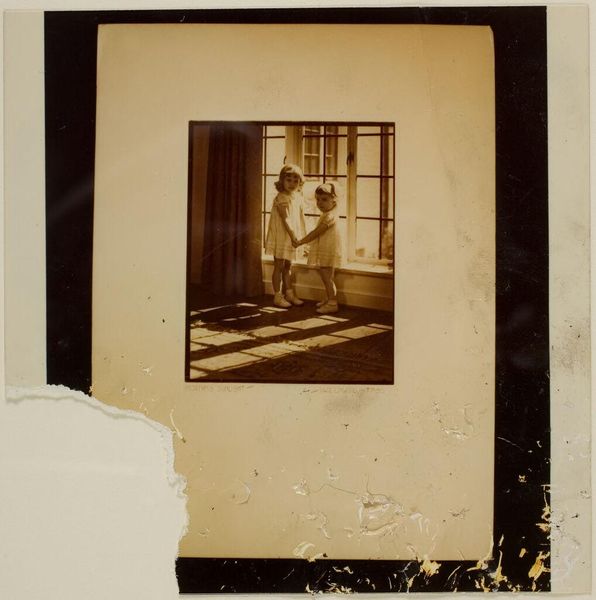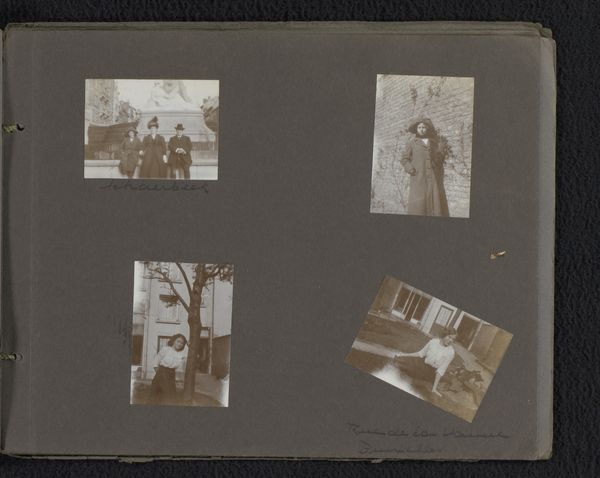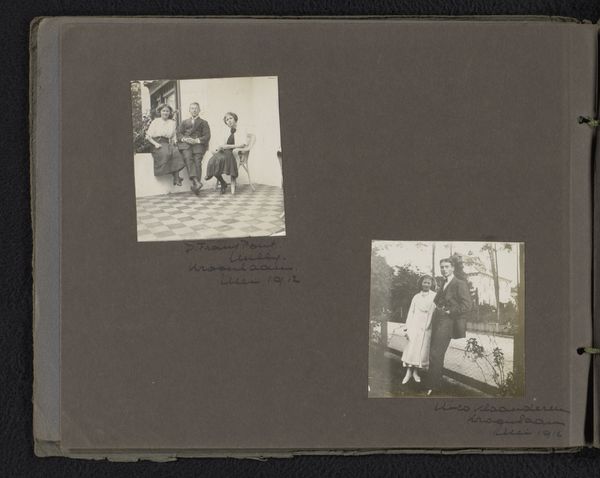
photography, gelatin-silver-print
#
portrait
#
photography
#
gelatin-silver-print
#
modernism
#
realism
Dimensions: height 60 mm, width 90 mm, height 85 mm, width 120 mm
Copyright: Rijks Museum: Open Domain
Editor: Here we have an intriguing gelatin-silver print titled "Militair van de Kriegsmarine op kantoor," or "Soldier of the Navy in Office," created sometime between 1940 and 1943 by an anonymous artist. There's an unsettling stillness to the photograph. What stands out to you in terms of how it reflects the means of production and the social context surrounding its creation? Curator: The materiality of this gelatin-silver print is crucial. The relatively simple technology, widespread during the war, suggests mass production and accessibility. Considering the historical context, the rationing of materials would have directly impacted the photographer's choices, perhaps even the availability and quality of photographic paper and chemicals. What implications arise from the ready availability and lower cost of photography, compared to painted portraiture during the time period? Editor: That’s interesting! It makes you wonder who the intended audience was, since it's presented within the confines of a family photograph album. Curator: Precisely! A painted portrait would usually signify wealth and status, here, however, we see an intimacy through a common photographic technique, but taken during the occupation and Nazi naval activity. Were these images a way of showing normality to loved ones away at war? The very act of documenting becomes a political one in this framework. Do you agree? Editor: Absolutely, framing ordinary moments using this medium becomes an act of quiet defiance or perhaps propagandistic compliance, depending on the photographer’s intentions, of course, and that’s difficult to ascertain now. It adds layers of complexity that a straight painted portrait wouldn't necessarily possess. Curator: Indeed. The materiality forces us to question the intersection of private and public spheres, labor, and the politics of representation during wartime. It highlights photography as not merely a reflection of reality, but as a constructed artifact embedded within a network of social and economic forces. Editor: Thanks, it’s given me so much more to consider than just the soldier at the window. Curator: My pleasure. I learned something from your viewpoint, too.
Comments
No comments
Be the first to comment and join the conversation on the ultimate creative platform.
